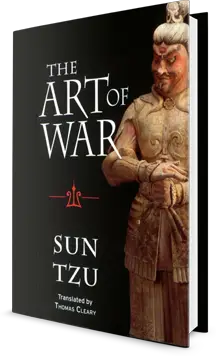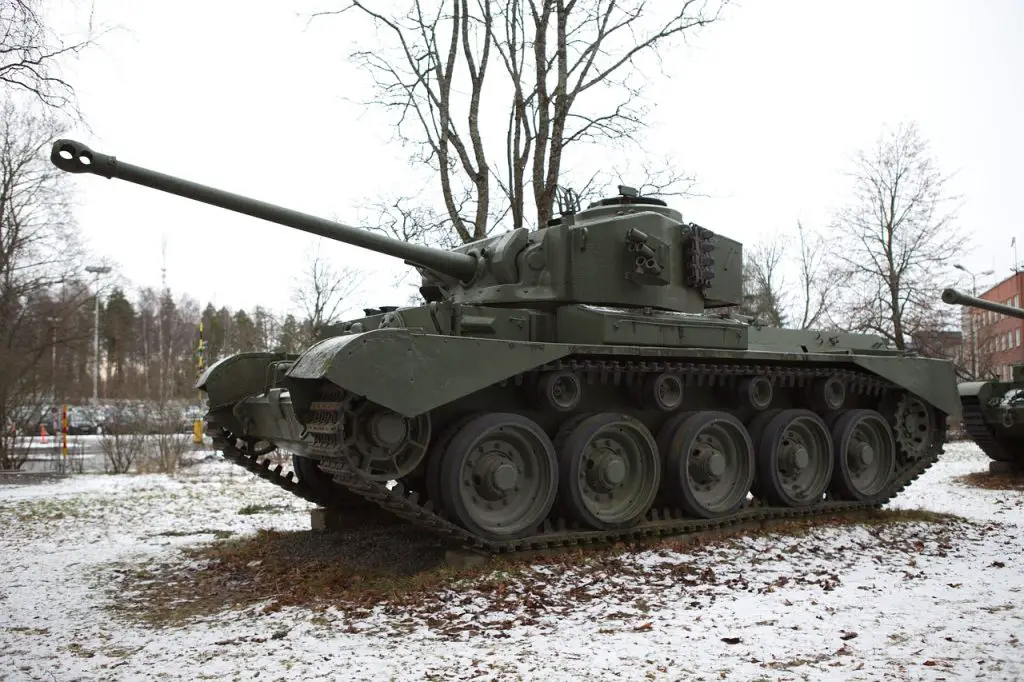Overview
Introduction to the Art of War
The Art of War is a timeless masterpiece that has influenced military strategies throughout history. Written by the ancient Chinese military strategist Sun Tzu, this treatise provides valuable insights into the nature of warfare and the principles that govern it. The Art of War emphasizes the importance of thorough planning, understanding the enemy, and adapting strategies to different situations. It highlights the significance of intelligence gathering, deception, and the use of terrain to gain an advantage. Sun Tzu’s teachings have been studied and applied by military leaders across the globe, from ancient empires to modern nations. This article explores the strategies employed by various empires throughout history, showcasing how they utilized the principles outlined in the Art of War to shape their destinies and leave a lasting impact on the world stage.
Historical Significance
The Art of War is a timeless masterpiece that has had a profound impact on the strategies and tactics employed by empires throughout history. It is a treatise written by the ancient Chinese military strategist Sun Tzu and is considered one of the most influential works on military strategy. The book’s teachings have been studied and applied by military leaders from various cultures and civilizations, shaping the course of warfare and the rise and fall of empires. Sun Tzu’s principles emphasize the importance of understanding one’s enemy, exploiting their weaknesses, and using deception and psychological warfare to gain an advantage. The strategies outlined in the Art of War have stood the test of time and continue to be relevant in modern warfare. They have been adapted and modified by military thinkers and strategists, serving as a foundation for the development of military doctrines and tactics. The English language translation of the Art of War has made its teachings accessible to a global audience, ensuring its continued influence and relevance in the study of warfare.
Key Principles
The Art of War is built upon several key principles that have shaped the strategies of empires throughout history. These principles provide a foundation for successful military campaigns and ensure the resilience and longevity of a nation. One of the key principles is adaptability. Empires that can adapt to changing circumstances and employ flexible strategies are more likely to overcome challenges and achieve victory. Another important principle is surprise. By catching their enemies off guard and employing unexpected tactics, empires can gain a significant advantage on the battlefield. Unity is also crucial. A united empire, with a strong sense of purpose and cooperation among its forces, is more likely to succeed in its military endeavors. Additionally, logistics play a vital role in the success of empires. Efficient supply lines, communication networks, and transportation systems are essential for sustaining military operations. Finally, leadership is a fundamental principle. Skilled and visionary leaders can inspire their troops, make sound strategic decisions, and rally their empire to victory.
Strategies of Ancient Empires

The Roman Empire: Conquest and Consolidation
The Roman Empire was one of the most powerful and influential empires in history. It was built on a foundation of military conquests and strategic consolidations. The Romans employed a variety of strategies to expand and maintain their empire. One of their key strategies was the use of legions, which were highly trained and disciplined military units. These legions were organized into cohorts and led by experienced commanders. The Roman military also utilized siege warfare techniques to conquer fortified cities and strongholds. They built impressive fortifications, such as walls and forts, to protect their territories. In addition, the Romans employed diplomacy to form alliances and secure the loyalty of conquered peoples. They would often grant Roman citizenship to those who submitted to their rule. This combination of military might and diplomatic skill allowed the Romans to conquer vast territories and establish a long-lasting empire.
The Persian Empire: Diplomacy and Expansion
The Persian Empire, known for its diplomatic prowess and territorial expansion, employed a range of strategies to establish and maintain its dominance in the ancient world. Through a combination of military force, political alliances, and cultural assimilation, the Persians were able to extend their influence across vast regions. One of the key highlights of their strategy was their emphasis on diplomacy, which allowed them to form alliances with neighboring kingdoms and prevent unnecessary conflicts. By negotiating treaties and offering incentives, such as trade agreements and protection, the Persians were able to secure the loyalty of their subjects and maintain stability within their empire. This diplomatic approach not only minimized the Fallout of brutal tactics in Israel, but also facilitated the assimilation of diverse cultures and religions into the Persian Empire. Additionally, the Persians were skilled in the art of expansion, utilizing both military conquest and political maneuvering to annex new territories. They employed a combination of military might, siege warfare, and strategic alliances to expand their empire, often incorporating conquered peoples into their administration and allowing them to retain some autonomy. This approach not only ensured the loyalty of conquered territories, but also enabled the Persians to benefit from the resources and expertise of diverse regions. Overall, the Persian Empire’s strategies of diplomacy and expansion played a crucial role in shaping their empire and establishing a lasting legacy in the ancient world.
The Chinese Empire: Defensive Warfare
The Chinese Empire, known for its defensive warfare strategies, developed a range of tactics and technologies to protect its borders and fend off invasions. One of the key principles of Chinese defensive warfare was the construction of Great Walls to create formidable barriers against enemy forces. The most famous example is the Great Wall of China, which stretched for thousands of miles and included watchtowers, fortresses, and signal towers. Additionally, the Chinese Empire employed a strategy of guerrilla warfare, using small, highly mobile units to harass and exhaust enemy forces. They also utilized advanced siege weapons such as trebuchets and catapults to defend their cities and fortresses. With these defensive strategies in place, the Chinese Empire was able to withstand numerous invasions and maintain its sovereignty for centuries.
Strategies of Medieval Empires

The Byzantine Empire: Fortifications and Siege Warfare
The Byzantine Empire, known for its formidable fortifications and innovative siege warfare tactics, was a dominant force in the medieval world. One of the key strategies employed by the Byzantines was the construction of massive defensive walls, such as the famous Theodosian Walls that encircled the city of Constantinople. These walls, made of stone and brick, were several meters thick and provided a formidable barrier against enemy attacks. In addition to their impressive fortifications, the Byzantines also developed advanced siege warfare techniques. They utilized catapults and trebuchets to launch projectiles at enemy positions, while also employing mining and undermining tactics to weaken the foundations of enemy fortifications. The Byzantines were also known for their use of Greek fire, a highly flammable and difficult-to-extinguish substance that was used to set enemy ships ablaze. Overall, the Byzantine Empire’s emphasis on fortifications and siege warfare played a crucial role in its ability to withstand numerous sieges and defend its territories.
The Mongol Empire: Swift and Devastating Conquests
The Mongol Empire, led by the legendary Genghis Khan, was known for its swift and devastating conquests that reshaped the lands it touched. With an unparalleled military force and strategic brilliance, the Mongols conquered vast territories, leaving a trail of destruction in their wake. Their nomadic lifestyle and mastery of horseback warfare allowed them to swiftly move across the vast steppes and launch surprise attacks on unsuspecting enemies. The Mongols employed a combination of psychological warfare, superior tactics, and advanced weaponry to overwhelm their opponents. They were skilled archers, capable of shooting arrows accurately while on horseback, giving them a significant advantage in battle. Additionally, the Mongols used innovative siege techniques, such as the use of siege towers and catapults, to breach fortified cities. Their conquests were not only marked by military prowess but also by a ruthless and brutal approach, as they employed terror tactics to subdue and control conquered populations. The Mongol Empire’s swift and devastating conquests left an indelible mark on history, forever changing the political and cultural landscape of Eurasia.
The Ottoman Empire: Naval Power and Siege Tactics
The Ottoman Empire, known for its formidable navy and innovative siege tactics, was a dominant force in the Mediterranean region during the medieval period. With a strong focus on maritime warfare, the Ottomans built a powerful fleet that enabled them to control key trade routes and project their influence across the seas. Their naval power was complemented by their expertise in siege warfare, as they developed advanced techniques and weaponry to breach fortified cities. The Ottomans utilized cannons and mortars to devastating effect, using them to breach city walls and create chaos within. Additionally, they employed tunnels and mines to undermine enemy defenses, further enhancing their siege capabilities. These innovative tactics allowed the Ottomans to conquer and maintain control over vast territories, solidifying their status as a major empire of the time.
Strategies of Modern Empires
The British Empire: Naval Supremacy and Colonial Warfare
The British Empire, known for its naval supremacy and expertise in colonial warfare, was one of the most powerful empires in history. With a vast fleet of ships and well-trained sailors, the British were able to establish control over vast territories across the globe. Their naval superiority allowed them to protect their colonies, expand their influence, and defend their trade routes. The British Empire’s strategy of using their navy as a tool of power projection enabled them to maintain control over their colonies and assert dominance over other nations. Additionally, the British Empire’s colonial warfare tactics, such as the establishment of fortified settlements and the use of local allies, played a crucial role in their success. These strategies allowed the British Empire to establish a global empire that spanned continents and shaped the course of history.
The French Empire: Napoleonic Tactics and Grand Armée
The French Empire, under the leadership of Napoleon Bonaparte, employed Napoleonic tactics and the formidable Grand Armée to achieve military dominance. These innovative strategies revolutionized warfare and played a crucial role in the empire’s expansion and success. One of the key elements of Napoleonic tactics was the use of combined arms, which involved coordinating infantry, cavalry, and artillery units to create a powerful and coordinated force. This approach allowed the French to swiftly maneuver on the battlefield and overwhelm their opponents. Another important aspect of the French Empire’s strategy was the emphasis on speed and mobility. Napoleon recognized the importance of quick and decisive actions, often employing rapid marches and surprise attacks to catch his enemies off guard. Additionally, the Grand Armée, which was composed of highly trained and disciplined soldiers, played a significant role in the French Empire’s military achievements. The size and organization of this elite force allowed Napoleon to execute complex maneuvers and outmaneuver his adversaries. Overall, the French Empire’s Napoleonic tactics and the Grand Armée exemplify the ingenuity and effectiveness of their military strategies, leaving a lasting impact on the art of war.
The American Empire: Air Power and Technological Superiority
The American Empire was known for its air power and technological superiority in warfare. With the invention of advanced aircraft and weapons systems, the American military gained a significant advantage over its adversaries. The use of strategic bombing and precision airstrikes allowed the American forces to target key infrastructure and military installations with devastating effect. This approach was particularly evident during World War II, where the American air campaign played a crucial role in the defeat of the Axis powers. Additionally, the American Empire’s technological advancements in communication and surveillance enabled them to gather valuable intelligence and maintain superior situational awareness on the battlefield. These capabilities gave them a significant edge in planning and executing military operations. The American Empire’s dominance in the air and its ability to leverage technology for military advantage solidified its position as a global superpower.
Conclusion

Legacy of Ancient Strategies
The strategies employed by ancient empires have left a lasting impact on the art of war. These empires, such as the Roman Empire, the Persian Empire, and the Chinese Empire, developed innovative and effective strategies that shaped the course of history. One of the key legacies of ancient strategies is their emphasis on tactical and strategic thinking. These empires understood the importance of planning and preparation before engaging in battle, and they employed various tactics to gain an advantage over their enemies. Additionally, ancient empires also made significant contributions to military technology and engineering. For example, the Chinese Empire’s invention of gunpowder revolutionized warfare and had a profound impact on the development of weaponry. The legacy of ancient strategies can still be seen in modern warfare, with many of their principles and tactics being applied by militaries around the world today.
Lessons for Modern Warfare
In the ever-evolving landscape of warfare, ancient strategies continue to provide valuable lessons for modern military commanders. The strategies employed by the great empires of the past have shaped the course of history and left a lasting impact on the art of war. Adaptability is a key lesson that can be learned from these ancient strategies. Empires that were able to adapt their tactics and techniques to the changing nature of warfare often emerged victorious. Additionally, the importance of intelligence gathering cannot be overstated. Ancient empires recognized the value of information and employed various methods to gather intelligence on their enemies. This allowed them to make informed decisions and gain a strategic advantage. Another crucial lesson is the significance of logistics. Empires that were able to efficiently supply their armies with food, weapons, and other necessities had a distinct advantage over their adversaries. Lastly, leadership played a vital role in the success or failure of empires. The ability to inspire and motivate troops, make difficult decisions, and effectively command in the midst of battle was a defining characteristic of great leaders throughout history. By studying the strategies of ancient empires, modern military commanders can gain valuable insights and apply them to the complex challenges of warfare today.
The Ever-Evolving Art of War
The art of war has always been a dynamic and ever-evolving field, adapting to the changing nature of conflicts and the advancements in technology. Throughout history, empires have developed and implemented various strategies and tactics to gain an advantage on the battlefield. These strategies have shaped the course of empires, influencing the outcome of wars and the rise and fall of civilizations. From the ancient Roman Empire’s conquest and consolidation to the modern American Empire’s reliance on air power and technological superiority, each empire has left its mark on the art of war. The strategies employed by these empires have not only influenced military tactics but also had a profound impact on political, economic, and cultural aspects of society. The legacy of these ancient strategies continues to resonate in modern warfare, as military leaders study and apply the key principles that have stood the test of time. However, the art of war is not static, and new strategies and technologies continue to emerge, shaping the future of warfare. As the world becomes more interconnected and complex, the need for innovative and adaptable strategies becomes even more crucial. The ever-evolving art of war will continue to play a pivotal role in shaping the destiny of empires and the course of history.
Avid Writer with invaluable knowledge of Humanity!
Upcoming historian with over 30 million views online.
“You make your own life.”





